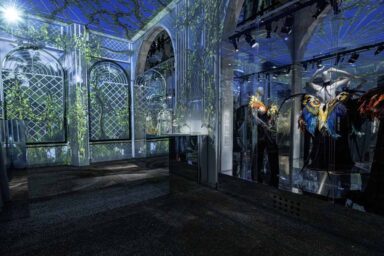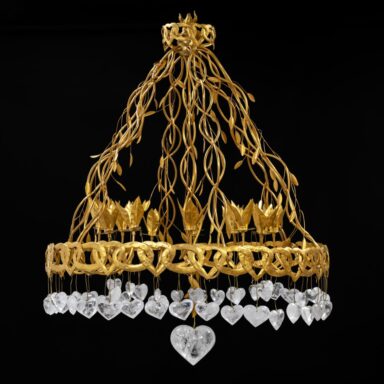An exhibition in Denver Art Museum celebrates Christian Dior’s gaze and his eternal love for women
Text by: Annarosa Laureti
It all began with a jacket, the Bar Jacket, shown during that magic and freezing morning on February 12, 1947, at the most Parisian of addresses, 30 Avenue Montaigne… and the rest is history.
The American editor-in-chief of Harper’s Bazaar Carmel Snow consecrated the master couturier as the creator of the “new look”. “It’s quite a revolution, dear Christian! Your dresses are wonderful, they have such a new look!” she said.
After the success reached at home, finally the designer decided to set sail to American Continent “to be aware of – as a Parisian couturier – not only the needs of French women, but also those of elegant women around the world.”
Starting his journey from the Big Apple – “the city that never sleeps” – and proceeding from Dallas to Los Angeles, from San Francisco to Chicago, Boston and Washington to the conquer of the New World, Christian Dior was applauded by everybody: first he was awarded, as the first Frenchman ever, with an “Oscar of fashion” by the department store Neiman Marcus in Dallas, then he became also the first French couturier to appear on the cover of Time magazine in 1957.
The designer’s creations fascinated American women, and American women charmed him as well, bonding in a close relationship that has not ended yet.
Harboring an endless love for California – “Was it not the earthly paradise of which all Americans and so many Europeans dreamed?” he wrote in his memoirs – Monsiuer Dior was involved in a truly ménage à trois with American West and American women when he began to dress up Hollywood actresses: Elizabeth Taylor, Grace Kelly, Rita Hayworth, Marilyn Monroe and, above all, Marlene Dietrich, a close friend of his and one of the first star who stepped the red carpet in Dior from the very start.
These ladies in Dior are the main characters of “Dior: From Paris to the World”, the exhibition organized by Denver Art Museum (DAM) as a sublime tribute to the visionary gaze of this incredible designer who has expressed, in a revolutionary way, a modern vision of femininity since his debut.
A selection of more than 200 haute couture dresses as well as accessories, photographs, videos, films and original sketches, toils and rare archival pieces too, tells, in a truly labyrinth designed by the architect Shohei Shigematsu, the Maison Dior’s history, linked not only to European and North American continents but also to South America, Asia and Africa.
As Florence Müller, curator of the exhibition, said, in fact, “He was the first to understand that from a very exclusive couture house, one catering to women of the highest elegance, he could conquer the planet.”
An exhibition that wants also to encourage audiences to think differently about the boundaries of fashion as art, made possible thanks to loans provided by the Dior Héritage archives and from collectors such as Hamish Bowles as well as from major American museums, including the Metropolitan Museum of Art in New York – the very first one to expose a Dior haute couture dress in 1948 – the Henry Ford Museum in Detroit and the Chicago History Museum.
“Dior: From Paris to the World” celebrates 70 years of creativity and avant-garde during which the couturier and his six successors, from the rooms of the “Studio of Reveries”, have made, and continue to make, women dream.
Cover: Christian Dior with models, about 1955. Photo André Gandner. ©Clémence Gandner
“Dior: From Paris to the World”
Denver Art Museum (DAM) , Denver
From November 18, 2018 to March 3, 2019










